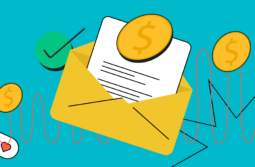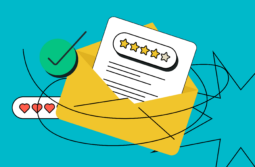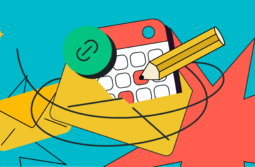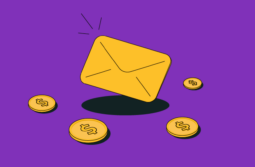Email marketing is 40 times more effective than social media in customer acquisition and sales generation.
You cannot afford to overlook it.
After collecting your visitor’s email, you have to develop a relationship with them. This will enable you to build trust, which will, in turn, help them do business with you.
For you to do that, you need to create email series that your subscribers will be excited to read. This is called a follow-up sequence.
Content:
What is a follow-up sequence?
A follow-up sequence is a set of emails you create, with usually five to six emails to send to your subscribers right from the time they subscribed to your email list. These emails can be sent over a few days or weeks.
A follow-up sequence gives you the opportunity to tell your brand’s story, build trust and introduce your products or services to your subscribers.
The very first days of your follow-up are crucial, because the attention of the people is higher and they want instant gratification. So, they are quick to open your emails; click your link, etc. According to Kissmetrics, the first follow-up email gets the highest open rate often 70% or higher.
When you miss this opportunity, it can mean losing subscribers and potential customers.
The question is:
What kind of follow-up sequence will convert for your business?
Below is a simple sequence that converts.
Welcome emails
Welcome emails are the type of emails you receive when you sign up for a blog post update, newsletter, free downloads, etc online. It is an email that shows your gratitude to your subscribers for opting-in in to receive your emails.
It is an opportunity to get your subscribers to look forward to your next email. Welcome emails can have an open rate as high as 50%, which makes it more effective than newsletters. Also, customers who receive welcome emails are more likely to engage with a brand over the long term than those who do not.
This is why you need to create an engaging welcome email that will leave your subscribers wanting more. Below is a sample welcome email from Sidecar.

Below are best practices you can follow to create an engaging welcome email for your subscribers:
- Express your appreciation: First of all, when creating your welcome email, make sure you express your appreciation to your subscribers for signing up to receive your emails.
- Introduce yourself: Not everyone that signs up to your list knows you. You will need to tell them who you are, what you do and how you can be of help to them. Encourage them to share their information with you as well.
- Build expectations. Let your subscribers know the kind of content you will be sharing with them and the frequency. This is to ensure that you build expectations and trust in your subscribers.
- Share helpful resources: You can include resources that will help your subscribers get to know your brand in the welcome email. They will start engaging with it until you send your next email. The resources can be blog post links, guides, e-books, podcast, and videos.
- Encourage them to connect with you on your social media networks: Add links to your social media channels so that your subscribers can connect with you on other platforms. You can also add a click-to-tweet in your email that will make your subscribers share your email list with their friends and network.
Q & A email
The goal of the question and answer email is gather information about your subscribers. This will enable you to understand your audience and also gain blog post ideas.
The question and answer email is the best way to get answers. In this email, you want to ask your subscribers’ simple, open-ended question that will help you to understand their struggles and pains so that you can find solutions to them.
This way, you will avoid wasting time writing content and only sell products that you think your audience will like. You can simply create an email with products that appeal to them.
Below is a sample question and answer email from Leadsbridge:

You can see the way it is written. Look at this question – “What inspired you to sign up?”. This is the most important question you can ask your subscribers. You can get answers that will let you know what people are really looking for on your website or from your product\service.
The second question is – “Is there a particular pain you’re hoping we can help you solve?”
This will enable you to know the pain points of your potential customers and ways to solve them.
Other similar questions you can ask are:
- How can we be of help to you?
- How would you like to improve your business in the next year?
- What are you struggling with the most in your business? etc.
When you understand why they subscribed and what they are expecting from you, you will be able to create better content and products that will meet their needs.
Benefits with the proof
It is a great idea to tell your subscribers about the benefits of subscribing to your email list. You can also show them proof or testimonials that your product or service works. This helps to break down or overcome objections that your product does not work.
A good example of a company that does this well is Lululemon (Yoga clothes and Running gear online shop for men and women). In their email, they explain the benefits of becoming a subscriber, which is, you will get to see new gear right away.
They also heighten subscribers’ expectations by telling them that they will be sending one email per week. Lastly, they introduce them to their blog.

Showing proof helps your subscribers overcome their objections that your product will not work for them. It is also social proof that people are actually getting results by using your product.
Groovehq found that using testimonials in their email, landing pages, and homepage increased their conversion rate by 15%.
Special invitation
The best way to make your subscribers feel special is to invite them to an event. It can be to a pre-sale, free demonstration, Beta group or webinar event, etc. It makes them feel special.
Below is an example of an invitation email from Leadsbridge to new subscribers.

Leadsbridge is inviting its subscribers to a free demonstration about how the company can help their business to grow. This is a great way to show off your product or services.
Free demos and webinars are an effective channel to talk directly to your potential customers. This way, your subscribers will be informed about upcoming events so that they can participate.
When you invite your audience to an event, it is easy to showcase your expertise and engage with them them further in the sales cycle.
When you invite your subscribers to an event, ensure that you include details like when, where and why you want them to be part of it.
Nurturing sequence
Nurturing emails are emails you send that enable you to stay in touch with your subscribers. This is necessary because about 50% of your leads are qualified but actually not ready to buy.
Do you know that using a nurturing sequence 50% of your customers are more ready to buy your product or service?
It will also amaze you to know that nurtured leads make 47% larger purchases than non-nurtured leads.
These stats are inspiring!
But the question is:
What kind of emails will actually help you to nurture your leads?
The first types of email you can use to nurture your leads are educational emails. This is the type of email that teaches your leads things they want to know about your company, brand or products. It can also be to educate them on their pain points and how to solve them.
You can send emails that enable you to further connect with them. Invite them to subscribe to your blog post updates and connect with you on your social media networks (such as Twitter, Facebook or LinkedIn). Follow each other to become part of their lives.
You can also send regular offers that correspond to their sales cycle. You need to figure out the kind of offers to send to them based on their behavior. Check out the topics they read about most and create targeted offers to help you move them through the stages.
For your subscribers who have stopped engaging with your emails or posts, you can send them emails that will help them re-engage with your company. You can ask them specifically to give you feedback on the quality of your content, email frequency or any subject that will quickly generate a response from them.
Conclusion
Email marketing is very effective and the good news is, it’s not going away anytime soon.
When people opt-in to your email list, you need to take care of them. Start with effective communication. Send them the five types of email sequence mentioned in this post i.e. welcome email, invitation email, benefits with the proof email, a special invitation email and nurturing sequence email.
When done right, these follow-up sequences will enable you to interact and engage your audience. They will in turn trust and do business with you.
What is your biggest takeaway from this post on how to generate leads? I want to read your comments below.






